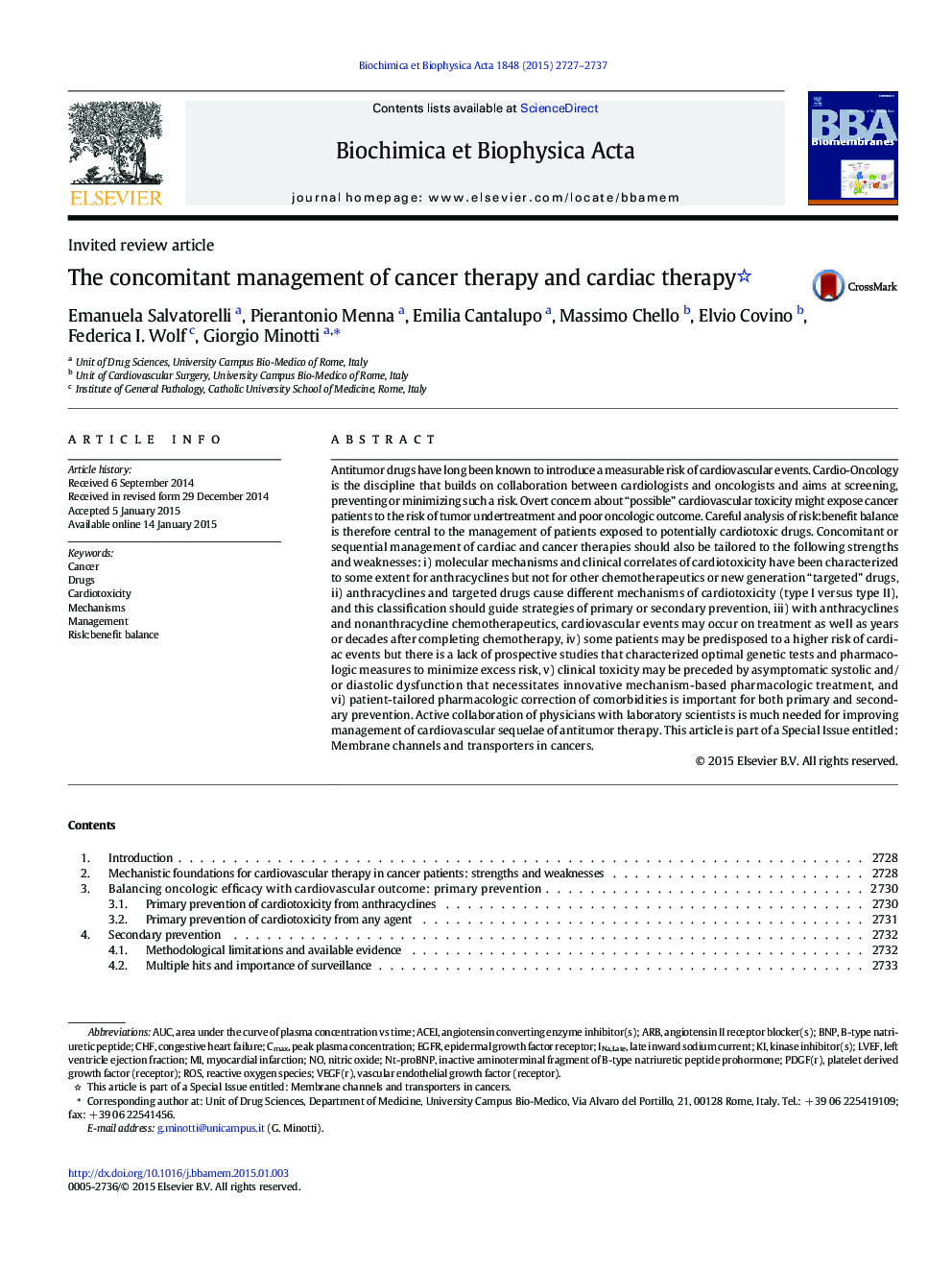| Article ID | Journal | Published Year | Pages | File Type |
|---|---|---|---|---|
| 1944091 | Biochimica et Biophysica Acta (BBA) - Biomembranes | 2015 | 11 Pages |
•Antitumor drugs introduce a measurable risk of cardiovascular events.•Risk perception should not preclude optimal tumor therapy.•Molecular insight and risk:benefit assessment are key issues.•There are several modalities for mitigating risk and preserving oncologic efficacy.•Type I and type II antitumor agents may require different approaches.
Antitumor drugs have long been known to introduce a measurable risk of cardiovascular events. Cardio-Oncology is the discipline that builds on collaboration between cardiologists and oncologists and aims at screening, preventing or minimizing such a risk. Overt concern about “possible” cardiovascular toxicity might expose cancer patients to the risk of tumor undertreatment and poor oncologic outcome. Careful analysis of risk:benefit balance is therefore central to the management of patients exposed to potentially cardiotoxic drugs. Concomitant or sequential management of cardiac and cancer therapies should also be tailored to the following strengths and weaknesses: i) molecular mechanisms and clinical correlates of cardiotoxicity have been characterized to some extent for anthracyclines but not for other chemotherapeutics or new generation “targeted” drugs, ii) anthracyclines and targeted drugs cause different mechanisms of cardiotoxicity (type I versus type II), and this classification should guide strategies of primary or secondary prevention, iii) with anthracyclines and nonanthracycline chemotherapeutics, cardiovascular events may occur on treatment as well as years or decades after completing chemotherapy, iv) some patients may be predisposed to a higher risk of cardiac events but there is a lack of prospective studies that characterized optimal genetic tests and pharmacologic measures to minimize excess risk, v) clinical toxicity may be preceded by asymptomatic systolic and/or diastolic dysfunction that necessitates innovative mechanism-based pharmacologic treatment, and vi) patient-tailored pharmacologic correction of comorbidities is important for both primary and secondary prevention. Active collaboration of physicians with laboratory scientists is much needed for improving management of cardiovascular sequelae of antitumor therapy. This article is part of a Special Issue entitled: Membrane channels and transporters in cancers.
Graphical abstractBalancing oncology efficacy with cardiovascular safety: Antitumor therapies vs prevention.Figure optionsDownload full-size imageDownload high-quality image (176 K)Download as PowerPoint slide
